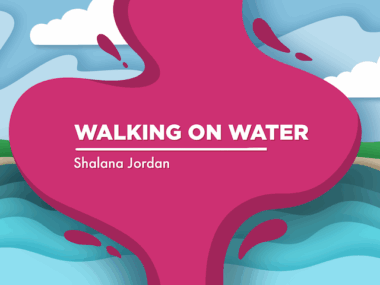Getting diagnosed was only the beginning of my aHUS journey
I wish I'd been better informed and prepared for the road ahead
Written by |

Thrombocytopenia, liver failure and hematoma, hysterectomy, end-stage renal disease, hypertrophic cardiomyopathy, uncontrolled hypertension, chemotherapy-like side effects, muscle atrophy, post-traumatic stress disorder, chronic fatigue, edema, May-Thurner syndrome, nerve damage, and anemia. That’s a “quick” list of the comorbidities that accompanied my atypical hemolytic uremic syndrome (aHUS). Being diagnosed with a rare illness is a huge deal, but I had no idea that this diagnosis would lead to many more.
I almost died from this sudden, debilitating disease, so you’d think that after weeks of testing, I’d breathe a sigh of relief upon receiving answers. A diagnosis often allows doctors to make a treatment plan, administer medications, and deliver a prognosis. But when I was diagnosed with aHUS, there was no simple cookie-cutter recovery plan.
My journey began in September 2020. I hadn’t felt well in weeks, and assumed I had COVID-19 again and would receive a doctor’s note and instructions to rest. Boy, was I wrong. When I went to the emergency room, I learned I was in multiorgan failure and was so near death that it’s a miracle I survived.
It took five weeks to receive my aHUS diagnosis, my first glimmer of hope. I remember how naive I was, posting on Facebook that I’d finally been diagnosed, which meant I could be treated and move on with my life.
Eager to be “fixed” and leave the hospital, I asked each doctor the burning questions of “What’s next?” and “When can I get back to work?” It took me a few days to realize that their answers were vague.
My favorite nephrologist was soft-spoken, eloquent, and very detailed, which I loved. She entered my room one morning and I hit her with my usual barrage of questions. She gave me the dreaded soft smile and pulled up a chair.
“I know you’re eager to leave. It’s fantastic we have a diagnosis for such a rare disease. But this disease did a lot of damage to your body — irreparable damage. And there’s also dialysis and your new medication …” She trailed off and paused.
“Yes, I assume I can be treated for a few more days and then get back to my life, right?” I asked. She swallowed hard before drawing in a long breath. I’ll never forget that dry gulp, the pause that seemed to last an eternity. I felt my eyes well up with tears; her body language told me all I needed to know.
“We really don’t know how long you’ll need dialysis. Unfortunately, most patients with end-stage renal disease don’t usually come off of dialysis. And you’ll most likely need Soliris [eculizumab] for the rest of your life.” She held my now shaking hand and was so kind, but her words burned every fiber of my being. I was devastated and couldn’t hold back the tears I’d held in for weeks.
In that moment, I had no clue my illness and the damage to my body would become even more complicated. I left the hospital a few days later, only to fall and injure myself. I was weak from the muscle atrophy I experienced while in the intensive care unit, and my newly acquired hypertension was still uncontrolled. The fall caused a massive liver bleed (hematoma) that filled half of my torso and sent me back to the ICU.
Once I was discharged (again), I had dialysis three days a week, weekly Soliris infusions that caused horrible chemotherapy-like side effects, and countless doctor appointments. I was exhausted, weak, nauseous, in constant pain, and unwell, no matter what I did. It seemed like my body was falling apart.
Port catheter complications and replacements led to issues with dialysis. But thankfully, I was able to stop dialysis after five months — another ray of hope. But I was quickly knocked off my happy pedestal by crippling edema, May-Thurner syndrome, and so many other setbacks.
I also had a nine-month battle with abnormal bleeding that exacerbated my anemia, and I ended up needing a hysterectomy at the age of 37. All the while, I was still doing infusions, losing my hair, struggling with bone pain, and more. And my hypertension remained uncontrolled until just a few weeks ago — more than four years after it began.
Having a diagnosis doesn’t always mean you’ll get better. That may seem like an obvious statement, but after weeks of mystery and uncertainty, having a diagnosis and treatment plan seemed like the end of a horrifying experience for me. But it wasn’t. I wish I’d had a better idea of what was to come, but being able to help prepare other patients for the journey ahead is a gift I gained from this experience.
Note: aHUS News is strictly a news and information website about the disease. It does not provide medical advice, diagnosis, or treatment. This content is not intended to be a substitute for professional medical advice, diagnosis, or treatment. Always seek the advice of your physician or other qualified health provider with any questions you may have regarding a medical condition. Never disregard professional medical advice or delay in seeking it because of something you have read on this website. The opinions expressed in this column are not those of aHUS News or its parent company, Bionews, and are intended to spark discussion about issues pertaining to aHUS.





Leave a comment
Fill in the required fields to post. Your email address will not be published.